I.Introduction
1.Fashion industry in Korea
A.Meaning of fashion industry nowadays
B.National power in global fashion industry
C.National key industry
2.Casual Wear industry in Korea
A.Scale of domestic market
3.ELAND group
A.At a glance
B.Major Subsidiaries of the ELAND group
II.Main Body
1.Description of company/customer/competitor
A.Company Analysis
a.Brand Concept
b.Sales and Current Marketing Position
c.SWOT Analysis
B.Customer Analysis
a.Segmentation
b.Targeting
c.Differentiation
d.Positioning
C.Competitor Analysis
a.Major competitors
b.Strengths of competitors
c.Broader competitors
2.Description of Current 4P
A.Product
a.Product overview
b.Shopping product to convenience products
c.Product line
B.Price
C.Place
a.Offline stores
b.Online stores
D.Promotion
a.The main promotion strategy
b.Marketing communication analysis
a)Target audience
b)Communication objective
c)Promotion message
d)Promotion media
3.Problems of Current 4P
A.Product
B.Price
C.Place
D.Promotion
4.Suggestion for Improvement in 4P
A.Product
B.Price
C.Place
D.Promotion
Works Cited
A. Company Analysis
Commemorating its 30th anniversary in 2009, E-Land announced the launching of Korea’s first fast fashion brand, SPAO. Short for “Specialty retailer of Private-label Apparel Original,” SPAO is located in the casual clothing line of E-Land’s fashion category.
a. Brand Concept
SPAO’s vision is to become the best SPA brand globally. And the brand’s mission is to enhance the customers’ lives by providing them low-priced and high-quality products and the basic clothing line suitable for Koreans. The final goal of the company is to position itself as a national brand and the best fast fashion brand in Korea and to launch overseas branches in China, the United States and Europe.
b. Sales and Current Marketing Position
After its launching on November 2009, SPAO opened its first store in Myeong-dong, central Seoul, covering five floors and 333 square meters. Amid the customers’ tremendous interest, SPAO earned the total sales of two billion won in November. The sales for December steadily marked as near two billion won but on January 2010, the sales went down as one hundred million won.
As its current marketing position, SPAO has expanded its stores outside Seoul to Il-san and Pusan. In total, SPAO has seven stores throughout Korea. And on April 2010, the company has entered and positioned itself also in Lotte.com online shopping mall.
c. SWOT Analysis
The strengths of SPAO include quick response (QR) system and collaboration with Korea’s top designers. Different from other fast fashion brands such as Mango and Zara which introduce new products on monthly or seasonal-basis, SPAO follows weekly review and planning of products. Such quick response system allows the company to respond more quickly to changing trends in a competitive clothing industry. Moreover in SPAO, more than one thousand designers including Korea’s top designer Chang Gwang-Hyo closely work together to enhance the products’ quality and style. This number of working designers is overwhelming when compared to two hundred designers in ZARA and on hundred in UNIQLO.
However, the weakness of SPAO lies in the lack of advertisement in television, and the physical stores concentrated solely on the Gyeong-gi province. SPAO has opened six stores in Gyeong-gi including Seoul, while it has only one store so far outside Gyeong-gi.
Opportunity includes the customers’ increasing interest in fast fashion. After the economic crisis in late 2008, consumers welcome the arrival of thrifty but stylish fast fashion brands. The fact that fast fashion is a growing market in Korea can be a huge opportunity to SPAO.
Meanwhile, the threat lies in the fact that Korea already has six major fast-fashion brands, including Japan-based UNIQLO, Spain-based Zara and Sweden-based H&M. Moreover, the fact that these competitors’ brand stores are mainly clustered around Myeong-dong is a major threat to SPAO.
B. Customer Analysis
a. Segmentation
SPAO divides its customers to geographic and demographic segmentation. Geographic segmentation divides the market into different regional units such as customers in Seoul, Il-san, An-san, Bucheon and Pusan. Also, demographic segmentation divides the customers into gender (male or female) and age from the teens to the twenties, and from the forties to the fifties.
b. Targeting
For targeting, SPAO decides to target very broadly (undifferentiated marketing) that it target All Generation without any restrictions in age. This is why SPAO has chosen Korean idol groups Girls Generation and Super Junior to target the customers in the teens and the twenties, and Korean public actor An Sung-Gi for the forties and fifties.
c. Differentiation
SPAO has defined four core values to differentiate its products and satisfy the customers’ increasing interest and needs of fast fashion clothes. The first is pattern. Different from other fast fashion brands in Korea such as Zara and H&M which the sizes of the clothes are according to Western sizes, SPAO designs its clothes to better suit the Korean body shape. Therefore, SPAO eliminates the size problem such as sleeves too long, pants too long or shoulders too wide. The second value proposition of SPAO is high quality material. In order to maintain high quality, SPAO uses only premium quality materials for its clothing such as wool made in Australia and the best quality cotton from Bangladesh and India. The third is color. SPAO carefully selects colors that well match the skin color of the Korean people. And the final value provided by SPAO is low price. The products of SPAO cost only 80-90% of its competitor UNIQLO.
d. Positioning
SPAO has decided to go for “Same-for-the-Less” positioning. The brand offers comparable quality with other fast fashion industries but at a lower price. SPAO communicates the products’ high quality through the usage of premium quality materials; and at the same time, it offers them at lower
김은혜, “SPA 시장, 아직은 성장세.” 제경일보 Online, 13 May 2010. Web. 15 May 2010.
박신영, “토종SPA ‘스파오’ 첫달매출20억.” 파이낸셜뉴스., 12 Dec 2009. Web. 15 May 2010.
이승욱, “패스트 패션 젊은 멋쟁이와 통했다.” 대구일보 Online, 01 May 2010. Web. 11 May 2010. http://idaegu.com/index_sub.html?load=su&bcode=ABAA&no=17852
최대열, “SPA브랜드 화끈마케팅.” 아시아 경제 Online, 2 Feb 2010. Web. 2 Feb 2010. <
Armstrong, Gary, and Philip Kotler. Principles of Marketing. Pearson, 2010. Print.
E-land ESI, SPA 브랜드 매출 현황 보고서, February 2010.
E-land ESI, SPAO 2009 매출 실적 보고서, February 2010.
E-land ESI, SPAO 하의 매출 200% 향상의 비밀, January 2010.
E-land group, E.Land Group Overview - A Company of Challenge, 2008.
SPAO. Web. 02 May 2010. .
“Uniqlo Management Performance.” Knol, 2009. Web. 15 May 2010. http://knol.google.com/k/uniqlo-managemant-performance#
UN Int’l Trade Statistic Yearbook
2002 Korean mining and manufacturing industries Statistic Yearbook
2003 Fashion demanding forecasting analysis (Korea Fashion Association)




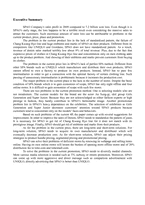
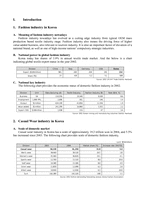

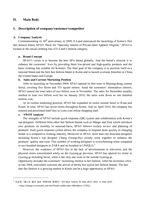

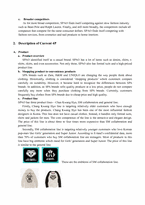

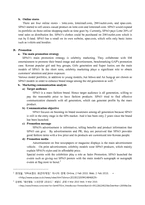
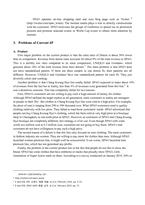

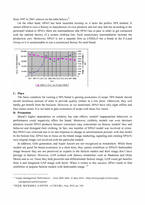
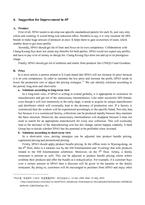
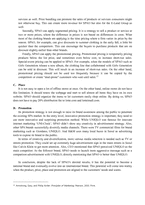

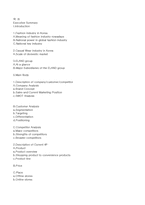
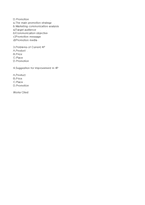
 분야
분야


